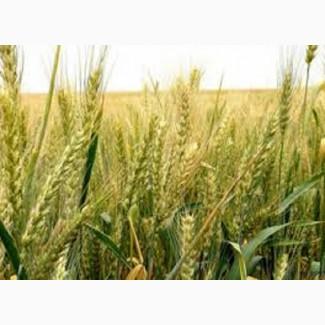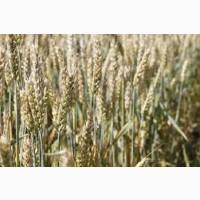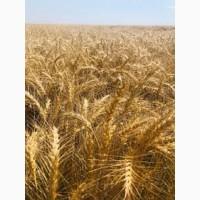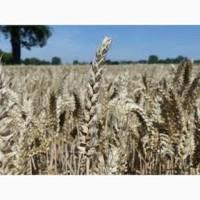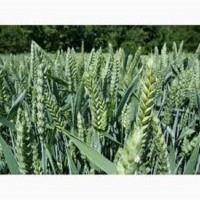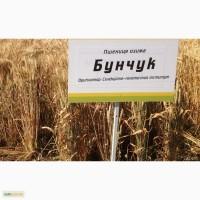For sale / buy
Winter soft wheat Shestizornaya, Kharkiv region.
Price11 000 UAH. / ton
Region:all of Ukraine,
Kharkiv region.
Updated:
Purpose of grain: Seed material
Quantity: 200 tons| ||147
Winter soft wheat Six-grain
Approbation signs: variety lutescens.
Vegetation period 265-280 days.
The period of vernalization is 20 days.
Early earing and ripening.
Ear: large, (10-12 cm), 25 spikelets per 10 cm of stem.
The shape of the ear is cylindrical.
The wax layer is weakly expressed, when the spike is ripe, it is white or yellow, not brittle.
Spike scale: medium, oval.
The tooth is short, straight and blunt. Medium, straight shoulder.
The keel is strongly pronounced towards the base.
Stem: hollow, medium thickness, strong.
The height of the plant is 80-90 cm.
The stem is white or yellow when ripe.(//tractor-service.com)
The shape of the bush is dense, upright.
Leaf: green, medium size.
Features of the variety:
under favorable conditions of development and non-thickened crops, the variety forms six grains and spikelets. this is the first grade of the fifth generation in varieties of lutescens, universal use.
Suitable for all growing technologies. resistant: to soil and air drought, heat resistant. Has increased winter resistance and frost resistance.
Resistant to shedding and root germination. In some years, fungicide protection is required, since the resistance to all diseases is insufficiently reliable.
With strongly thickened crops, when the stalk is 1 m long, the crops can lie down.
Sowing rate: 4.5 – 5 million germinatedseeds per 1 hectare (190-210 kg) depending on moisture availability and sowing time.
Grain characteristics:
Large, weight of 1000 grains 45-50 grams.
The shape of the grain is ovoid, the color is red, the furrow is medium, the base is bare, the tuft is medium pubescent. the variety belongs to the group of strong wheats.Grain contains 16% protein, 32% gluten. Strength of flour 405 o.a. The volume of bread is 1100 cm3, the overall grade of bread is 9 points. 183
Урожайность:
in a competitive variety test for 3 years, the average yield is 84.0 t/ha, which is 2.8 t higher than Shestopalovka standards. in the collection nursery for 3 years, the average yield was 88.2 t/ha, which is 17 t higher than Odesskaya 267, and 9 t higher than Tronka.
The maximum yield was obtained in Poltava Oblast in 2013: 106.82 t/ha
Approbation signs: variety lutescens.
Vegetation period 265-280 days.
The period of vernalization is 20 days.
Early earing and ripening.
Ear: large, (10-12 cm), 25 spikelets per 10 cm of stem.
The shape of the ear is cylindrical.
The wax layer is weakly expressed, when the spike is ripe, it is white or yellow, not brittle.
Spike scale: medium, oval.
The tooth is short, straight and blunt. Medium, straight shoulder.
The keel is strongly pronounced towards the base.
Stem: hollow, medium thickness, strong.
The height of the plant is 80-90 cm.
The stem is white or yellow when ripe.(//tractor-service.com)
The shape of the bush is dense, upright.
Leaf: green, medium size.
Features of the variety:
under favorable conditions of development and non-thickened crops, the variety forms six grains and spikelets. this is the first grade of the fifth generation in varieties of lutescens, universal use.
Suitable for all growing technologies. resistant: to soil and air drought, heat resistant. Has increased winter resistance and frost resistance.
Resistant to shedding and root germination. In some years, fungicide protection is required, since the resistance to all diseases is insufficiently reliable.
With strongly thickened crops, when the stalk is 1 m long, the crops can lie down.
Sowing rate: 4.5 – 5 million germinatedseeds per 1 hectare (190-210 kg) depending on moisture availability and sowing time.
Grain characteristics:
Large, weight of 1000 grains 45-50 grams.
The shape of the grain is ovoid, the color is red, the furrow is medium, the base is bare, the tuft is medium pubescent. the variety belongs to the group of strong wheats.Grain contains 16% protein, 32% gluten. Strength of flour 405 o.a. The volume of bread is 1100 cm3, the overall grade of bread is 9 points. 183
Урожайность:
in a competitive variety test for 3 years, the average yield is 84.0 t/ha, which is 2.8 t higher than Shestopalovka standards. in the collection nursery for 3 years, the average yield was 88.2 t/ha, which is 17 t higher than Odesskaya 267, and 9 t higher than Tronka.
The maximum yield was obtained in Poltava Oblast in 2013: 106.82 t/ha
|
Author, contacts | |
Haskom Trade LLC / reviews, info. / activity evaluation | |
|
Phone:
+38(xxxxxx
show
| |
| http://www.khaskom.com.ua | |
All user ads ~603 | |
Ad ID: #1044257
(added by a registered user, registration date: 28- 12-2016)
Added / Updated: 09-30-2024 08:54 (current, until: 30-09-2025)
Permanent Ad Address:
Shows / views for today: ?, total: ?
